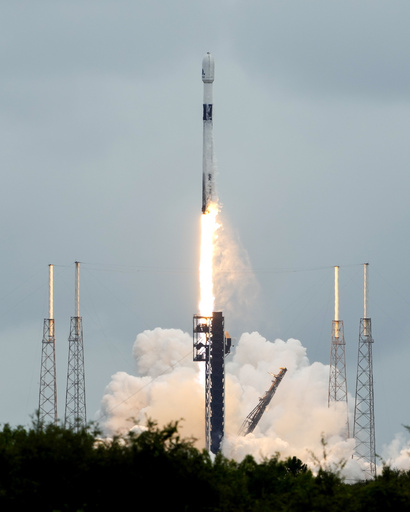SpaceX undertook a significant test flight of its massive Starship rocket on Sunday, showcasing its most ambitious launch to date, which included the objective of retrieving the returning booster using mechanical arms designed for this purpose.
Soaring to nearly 400 feet (121 meters) tall, the uncrewed Starship took off at dawn from a launch site in southern Texas close to the Mexico border. Following a flight pattern similar to its predecessors, which had typically failed shortly after launch or were lost in the sea, this rocket mimicked the trajectories of prior missions. The most recent flight in June was marked as the most successful, concluding without a catastrophic explosion.
In this attempt, SpaceX’s founder Elon Musk increased both the challenge and potential for risk. The company focused on bringing the first-stage booster back to its launch pad just a few minutes after liftoff. At the launch tower, large metal arms referred to as “chopsticks” were positioned to catch the descending 232-foot (71-meter) booster.
During the flight, the flight director held the responsibility of deciding in real time, using manual controls, whether to proceed with the landing attempt. SpaceX emphasized that both the booster and the launch tower needed to be in a stable state for the plan to succeed; otherwise, the booster would likely follow the fate of its predecessors by landing in the Gulf of Mexico.
After detaching from the booster, the sleek, stainless steel spacecraft was set to complete a world-circling mission with a target to safely splash down in the Indian Ocean. The flight in June had encountered issues at its conclusion due to structural loss. In response, SpaceX made enhancements to the software and modified the heat shield to improve the thermal tiles’ resilience.
SpaceX has been successfully recovering the first-stage boosters of its smaller Falcon 9 rockets for nine years as they transported satellites and astronauts into orbit from launch sites in Florida and California. However, Falcon 9 boosters traditionally land on floating platforms in the ocean or on concrete pads located miles away from their original launch sites.
The successful reuse of Falcon boosters has significantly boosted SpaceX’s launch cadence while saving the company considerable expenses. Musk aims to replicate this success with Starship, which, at its core, is the largest and most powerful rocket ever constructed, equipped with 33 methane-fueled engines on the booster section alone. NASA has commissioned two Starships with the purpose of landing astronauts on the Moon in the coming years. Furthermore, SpaceX plans to leverage Starship for transporting people and cargo to the Moon and eventually to Mars.




